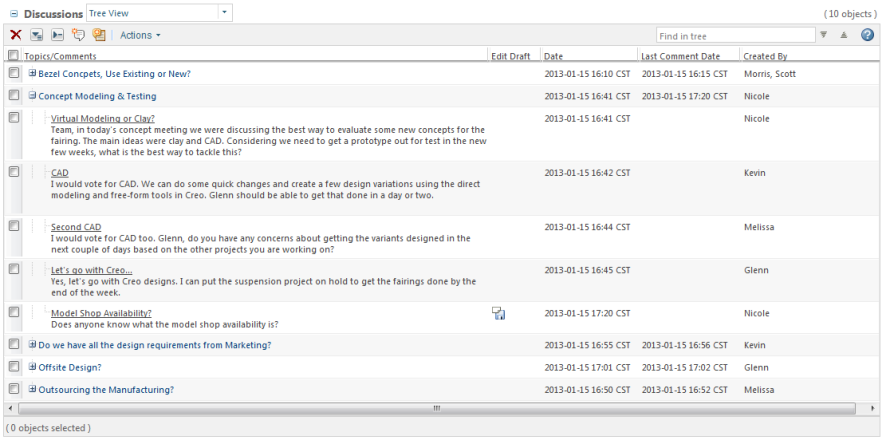I would be surprised if there wasn’t a third-party extension that can bring some of the needed features to Dropbox.
But it doesn’t show why those changes were made,
I take issue with this statement. PDM/PLM not only keeps the record of all changes (“what happened”). The “how” and the “why” are entirely possible to capture, but that is all down to how the team chooses to use the system, and how well they follow that use case. I don’t mean to tell you anything you don’t already know (but it’s good practice for me since I’m currently setting up a new PLM system). The terminology is from Windchill but the same principles apply:
HOW A became B would be recorded within the history of the change objects associated with the various versions of the part. The history of my released Revision 2 of the part will show that there was a Change Notice that authorized Rev 2’s release. In the change notice, I can see all affected objects (perhaps the CN resulted in several other parts being revised), and in its attributes we may have noted the justification for the changes made. Under the CN is the implementation plan, and its attributes may contain the specific instructions given to designers, doc controllers etc. on what changes to carry out.
WHY A became B would happen by again looking at the change objects. The Change Notice would have resulted from a Change Request, and that in turn would have resulted from a Problem Report. Therein are the observed issue, desired outcome, history of analysis, reviews and approvals. At each stage, each task assignee may add their comments and cast their vote.
But, this is only going to be useful if: people add relevant comments in the system. Change object descriptions and other attributes are filled out by creators. If the discussions are important to you, then they are captured in meeting minutes or as recordings, which are then attached to the change objects or called out by a hyperlink to the external source.
I think all of the above can be accomplished in just about any system that maintains versions and history. A PDM can do all of this more easily than a cloud storage could because it’s designed with the engineering process in mind, but a PLM with its customizable business object is really the right tool for this job.
Hope this continues to be helpful, and again, I do not intend to soapbox, just want to make sure we are on the same page in our understanding.
